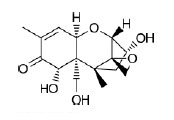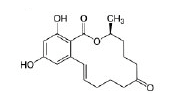Mycotoxines
Binding capacity of humic acid and fulvic acid
That is why BioAg Europe BV has had Utrecht University examine the binding capacity of PrimeHumic to the mycotoxins DON and ZEA in an in vitro intestinal model. A standard assay data analysis has been carried out, in accordance with the protocol used for commercial toxin binders. This showed that the PrimeHumic binder had a binding capacity of 8% for DON and 59% for ZEA at an incubation time of 2 hours with a pH of 6.5. This result is largely in agreement with the results of another test (conducted by Sabatar-Vilar et al., 2007). This study into the effects of different mycotoxin binders on DON and ZEA showed no effect on DON, but the humic and fulvic acid were able to bind ZEA (> 70%).
This research shows that PrimeHumic binds to certain mycotoxins; PrimeHumic could therefore possibly inhibit the uptake of these substances. This is in accordance with studies from scientific literature. These outcomes imply that the addition of humic acid can have a positive effect on intestinal health, by binding certain mycotoxins in the feed.

The chemical formula of DON

The chemical formula of ZEA

